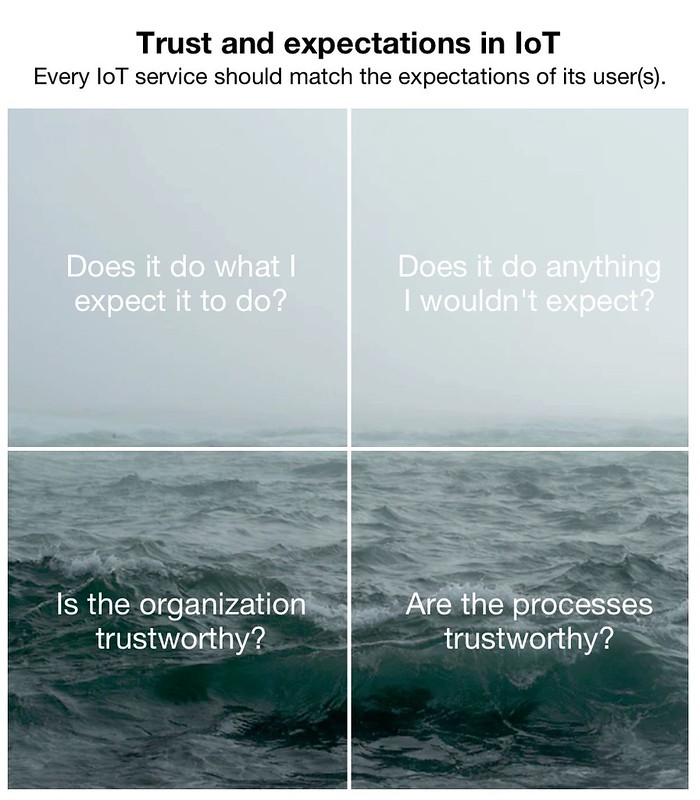One of the key challenges for Internet of Things (IoT) in the consumer space boils down to expectation management: For consumers it’s unreasonably hard to know what to expect from any given IoT product/service.
This is also why we’ve been investigating potentials and challenges of IoT labels and are currently running a qualitative online survey—please share your thoughts! The resulting report will be published later this year.
I think the quadrant of questions anyone should be able to answer to a certain degree looks somewhat like this (still in draft stage):

“Trust and expectations in IoT by The Waving Cat / Peter Bihr (image available under CC by)”
Let’s go through the quadrants, counter clockwise starting at the top left:
Does it do what I expect it do do?
This should pretty straightforward for most products: Does the fitness tracker track my fitness? Does the connected fridge refrigerate? Etc.
Is the organization trustworthy?
This question is always a tough one, but it comes down to building, earning, and keeping the trust of your consumers and clients. This is traditionally the essence of brands.
Are the processes trustworthy?
The most tricky question, because usually internal processes are really hard, if not impossible, to interrogate. Companies could differentiate themselves in a positive way by being as transparent as possible.
Does it do anything I wouldn’t expect?
I believe this question is essential. Connected products often have features that may be unexpected to the layperson, sometimes because they are a technical requirement, sometimes because they are added later through a software update. Whatever the reason, an IoT device should never do anything that their users don’t have a reason to expect them to. As an extra toxic example, it seems unreasonable to expect that a smart TV would be always listening and sharing data with a cloud-service.
If these four bases are covered, I think that’s a good place to start.
